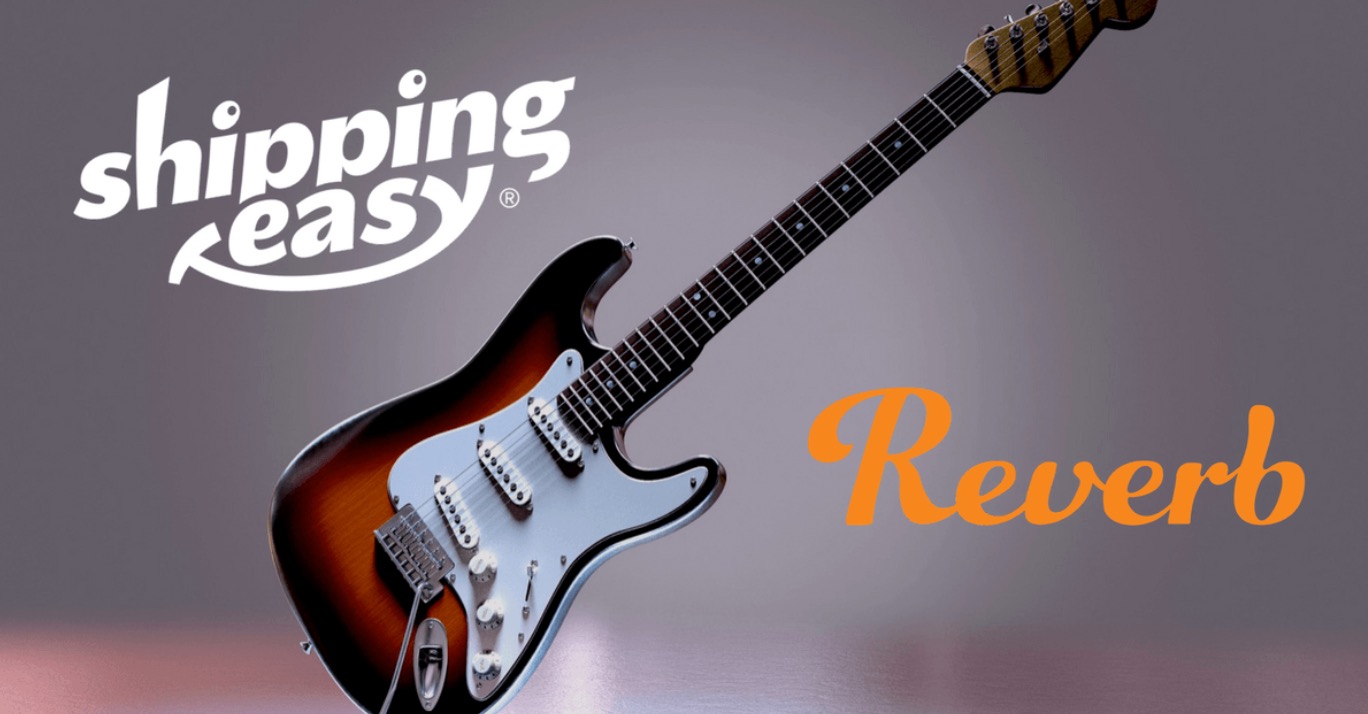If you sell musical supplies and/or instruments on a marketplace like Reverb, Amazon, or eBay, one of your biggest challenges is figuring out the best way to ship them. The weight, irregular size, and fragile nature of most instruments can make shipping costly and difficult. We currently integrate with Reverb, so let’s discuss how to ship musical instruments that are commonly sold on Reverb and other marketplaces!
Supplies for Shipping Musical Instruments
Whether it’s a brass, woodwind, percussion, or string instrument, an electric guitar, or a keyboard, there are some basic packaging materials to have on hand for shipping instruments both large and small:
- Plenty of newspaper or brown Kraft paper to crumple
- Sturdy packing tape
- Appropriately-sized boxes*
- Consider double-boxing, if possible
- Bubble wrap
- Rubber bands
*Guitars pose a particular challenge due to their size and shape. Reverb carries 3-packs of guitar-sized boxes, as do many other marketplaces.
We recommend avoiding packing peanuts as they can shift and potentially not offer the level of security needed to keep your instruments safe. If you do wish to use packing peanuts in your shipping, store them in a plastic bag and use this to cushion your instruments.

How to Ship Guitars
Shipping a guitar can prove to be challenging due to its size specifications. You also have to worry about the strings potentially catching on the box (if it’s not in a guitar case), the neck getting warped or broken, and other potential damages that can occur in transit because guitars are fragile. Following the steps we’ve outlined below can help ensure your guitar arrives safely to its destination.
In the box, create a bottom layer of crumpled newspaper or Kraft paper for the guitar/guitar case to sit on. Loosen the strings slightly to release tension (not necessary to completely detune the guitar, just release the pressure). If shipping in a hard case, use newspaper or microfiber towels to fill in loose space around the base of the guitar case to keep it from sliding around.
When it comes to securing the guitar head, some professionals, like Reverb, suggest elevating the neck of the guitar with crumpled paper and placing paper between the strings and the frets. Others suggest padding (not packing) paper just below the meeting point of the neck and the head to avoid shock. Still others suggest neither, so we will leave that up to you
After adding the paper, close the case and slightly shake it to see if you hear movement. If so, add more paper to stabilize the guitar. Once the guitar is firmly packed into the case and you’ve created a bottom layer of crumpled paper in the box, you’re ready to pack the case in the box.
Learn more about shipping specialty items with our Shipping 201 blog!
Pack paper around any open spaces as tightly as possible. If all of the open spaces are filled, you should have a difficult time moving the case with your hand. After the empty spaces in the box have been filled, create a top layer of crumpled paper as you did at the bottom. Tape all edges firmly. You may consider adding DO NOT LAY FLAT stickers to each side of the box to avoid heavier boxes ending up on top of the guitar box that could potentially cause damage. Although your package will be secured, we recommend obtaining shipping insurance to protect your musical instrument.
We’ve included a step-by-step video from Reverb below for more information on how to ship your guitar.
How to Ship a Drum Kit
Much like a guitar, it’s important when shipping a drum kit to fill all empty space and create buffer space to avoid damage from drops or collisions in transit.
Many of the tips discussed for shipping guitars should be applied when you ship drum kits as well as musical instruments of all other shapes and sizes, including:
- Fill all empty space with newspaper or Kraft paper
- Secure and separately wrap pieces that could break off during transit
- Perform a “shake test” to make sure your instrument is securely packaged before taping the box closed and weighing it for shipping
Reverb created a great video explaining all the details of properly packing up your kits and shipping drums that we’ve included below.
How to Save When You Ship Musical Instruments
When shipping musical instruments, particularly larger instruments, it’s important to know that shipping costs may be calculated based on dimensional weight or DIM weight. This means the shipping cost is based more on the amount of space the package would take up on a truck rather than its actual physical weight.
Using tools like our rate calculator can help you not only select the right carrier and shipping method but can save you shipping costs! ShippingEasy users also have access to affordable USPS and UPS rates. These rates will vary depending on the musical instrument being shipped, how it’s packaged, and which carrier and service are selected, but these discounts will definitely add up.
Read more about how to save with ShippingEasy in our Commercial Shipping Simplified with ShippingEasy blog.
Conclusion
If your business sells musical instruments, Reverb could be a good marketplace to utilize. ShippingEasy is also here to help with our discounted rates, marketplace integrations like Reverb, and rate calculator to help you save time and money when shipping musical instruments and beyond!
Hit all the right notes with ShippingEasy, and start your 30-day free trial!
Rob Zaleski
Latest posts by Rob Zaleski (see all)
- USPS 2023 Shipping Rate Changes - November 16, 2023
